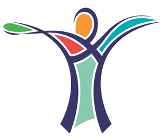Walking speed does not affect age-differences in ankle muscle beta-band intermuscular coherence during treadmill walking
DOI:
https://doi.org/10.20338/bjmb.v16i5.323Keywords:
Aging, Gait,, EMG, Oscillatory coupling, Neuromuscular controlAbstract
Background: By examining whether age and speed each differently affects beta-coherence during walking, we can extend the limited evidence on age-related impairment in neural control of walking. We determined the effects of age and walking speed on intermuscular beta band coherence between lower limb muscle pairs and the association between stride characteristics and intermuscular beta band coherence between these muscle pairs.
Methods: Older (n=12) and younger (n=14) individuals walked on a treadmill at fixed (1.2 m/s) and fast (~1.3x preferred) speeds for 3min. For 100 dominant leg strides, we measured length, width, stance, swing time, cadence and intermuscular beta-coherence (15-35Hz) for the synergistic (biceps femoris (BF)-semitendinosus, rectus femoris (RF)-vastus lateralis (VL), gastrocnemius lateralis (GL)-soleus (SL), Tibialis anterior (TA)-peroneus longus (PL)) and the antagonistic (RF-BF and TA-GL) muscle pairs at swing and stance.
Results: Comparing fast vs. fixed speed, participants walked with increased length (21%), cadence (12%), and coefficient of variation (CV) of stride length (14%), decreased stride width (-20%), and stance (-5%) and swing time (-14%) and with stronger TA-GL beta-coherence during early stance (69%, all p<0.01). Older vs. Younger individuals walked with slower fast gait speed (~9%), higher CV of stride length (21%), weaker GL-SL (-47%) and TA-PL (-60%) beta-coherences during the late swing and early stance phase, respectively (all p<0.01). No Group*Condition interactions occurred
Conclusion: Oscillatory coupling between synergistic ankle muscle pairs during walking is lower in older vs. young individuals, but this difference is independent of walking speed while walking on a treadmill.
Downloads
Metrics
Published
How to Cite
Issue
Section
License
Copyright (c) 2023 Paulo Cezar Rocha Santos, Inge Zijdewind, Claudine Lamoth, Lilian Teresa Bucken Gobbi, Tibor Hortobágyi

This work is licensed under a Creative Commons Attribution-NonCommercial-NoDerivatives 4.0 International License.
Authors must declare that the work submitted is their own and that copyright has not been breached in seeking its publication. If the manuscript includes work previously published elsewhere, it is the author(s) responsibility to obtain permission to use it and to indicate that such permission has been granted.
Authors retain the copyright of their paper and grant the Brazilian Journal of Motor Behavior (BJMB) the right to first publish the work under a Creative Commons Attribution-NonCommercial-NoDerivatives license (CC BY-NC-ND). This license allows users to share the paper given the appropriate credit to the author and source and does not allow commercial uses and derivative materials to be produced.























